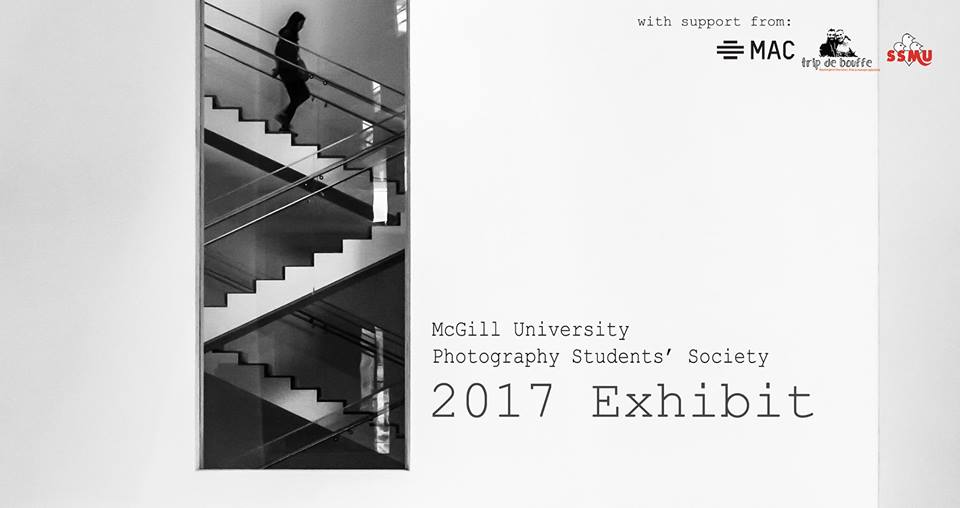On March 30, the McGill University Photography Students’ Society (MUPSS) hosted their annual photo exhibit, showing works from both members of the club and the larger McGill community. The photos ranged from digital to silver gelatin to chromogenic prints, and captured bright landscapes in saturated colour and minimalistic black-and-white pieces.
The MUPSS exhibit took place at Shape Gallery: a cozy venue located behind an unassuming door at the lower end of the Saint-Laurent, at the top of a seemingly unending staircase. Shape Gallery is well-loved by the MUPSS and Montreal’s artistic community. Known to “curate and promote art and music from around the world,” the company’s statement suggests that “by immersing our followers in carefully constructed space, both virtual and physical, we aim to bridge the gap between the two primary walks of artistic expression.”
The laid-back atmosphere of Shape Gallery made it a good venue to look at art while listening to live music and conversing over wine and cheese. With white brick walls, exposed but painted wires, a mix of artificial and natural lighting, and ambient tunes in the background, the gallery exuded an industrial yet clean feel.
The print’s black and white gradient, matched with the desolate, faded state of the gas-stations, evoked feelings of weariness and of something that seems passé – but continues to haunt the present.
The photography collection included portraits, natural landscapes, city-life, and an array of other subjects. One attention-grabbing print was entitled “Miner,” captured by Jordan Kasarjian. “Miner” depicts a bright man with smiling teeth and smiling eyes, wearing a yellow jersey with a contrasting green collar while sitting against a rocky backdrop. In the description of this photograph, taken at the Kawah Ijen sulfur mine in Indonesia, it reads that “these miners have an expected lifespan of no more than fifty years, as they work around highly toxic sulfuric gases. If you look closely, you can see the sulfur in their eyelashes.” The eeriness of the image stems from the stark contrast between the almost exaggerated but seemingly authentic smile of the man and the photograph’s darker context.
“Diesel” and “Gaz Bar,” a pair of black and white silver gelatin prints taken by Jessica Hobbs, depict old, seemingly abandoned gas stations found along the sides of the desert-like Autoroute 20. In their artist statement, Hobbs notes that “…these relics of the past now stand vacant as prophets to an eventual and inevitable reality. Just as our dependence on fossil fuels has pushed the need for the mega service stations that replaced these once thriving family businesses, it also foretells of the day when the wells run dry.” The print’s black and white gradient, matched with the desolate, faded state of the gas-stations, evoked feelings of weariness and of something that seems passé – but continues to haunt the present.
[Chabel] reflected on the factor of luck and the photographer’s ability to capture a fleeting moment.
I got the chance to talk to Nina Chabel, who exhibited a digital print titled “Looking (away),” “Looking (away)” features a girl caressing her pug while looking off into the vacant distance; the pug seems to be doing the same as she mindlessly goes about in her own little world. Chabel explained that the photo was taken by chance. She reflected on the factor of luck and the photographer’s ability to capturing a fleeting moment. Other pieces like “Metro Man,” snapped by Welton Jones, capture similarly transitory moments. The piece features an elderly man sitting on the opposite side of a metro station, frozen in the window frame of a passing train. The man’s crisp figure is contrasted to the blurred dark body of the moving train, presenting a candid yet poetic instant.
The selected photographs explored a wide range of themes and mediums, with many revealing the complex layers embedded within the idea of ‘the moment.’’ A person can both experience a reaction to their present environment while simultaneously reflecting on the more general, overarching aspects of their life. Our reactions can extend beyond and before the ‘moment’ captured in the photograph.
